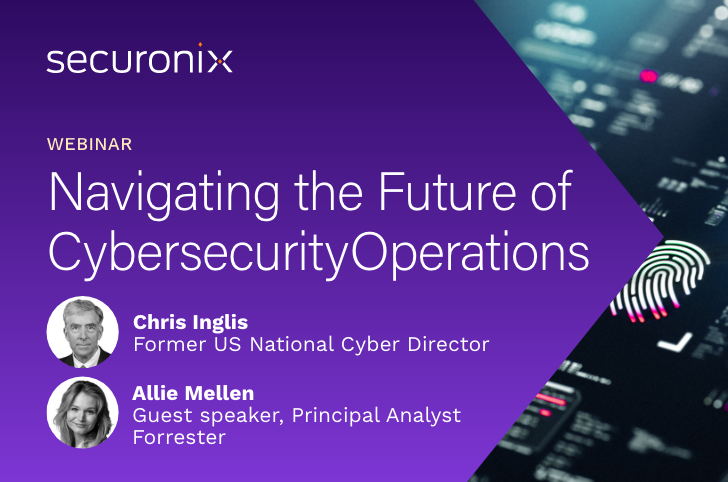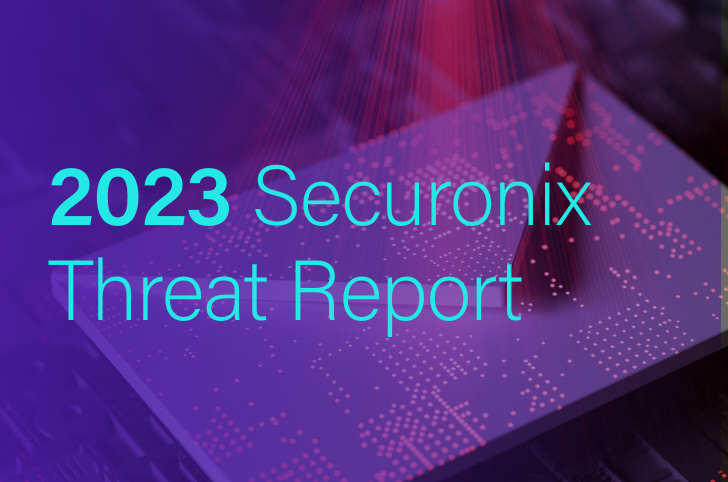- Why Securonix?
- Products
-
- Overview
- 'Bring Your Own' Deployment Models
-
- Products
-
- Solutions
-
- Monitoring the Cloud
- Cloud Security Monitoring
- Gain visibility to detect and respond to cloud threats.
- Amazon Web Services
- Achieve faster response to threats across AWS.
- Google Cloud Platform
- Improve detection and response across GCP.
- Microsoft Azure
- Expand security monitoring across Azure services.
- Microsoft 365
- Benefit from detection and response on Office 365.
-
- Featured Use Case
- Insider Threat
- Monitor and mitigate malicious and negligent users.
- NDR
- Analyze network events to detect and respond to advanced threats.
- EMR Monitoring
- Increase patient data privacy and prevent data snooping.
- MITRE ATT&CK
- Align alerts and analytics to the MITRE ATT&CK framework.
-
- Industries
- Financial Services
- Healthcare
-
- Resources
- Partners
- Company
- Blog
Information Security
Ask anyone in a security leadership role about their team and you’ll likely find that the great majority are struggling. They are struggling because finding security talent is increasingly hard and keeping that talent is even harder. This is one of the key reasons many organizations are embracing a distributed security team model.
As technology continues to simplify our personal and professional lives, organizations seeking to “get with the times” are increasingly allowing their staff to telecommute, as well as work from other locations, time zones, and in some instances, other countries. There are many positive outcomes for having a security team be dispersed geographically ranging from improved work-life balances for the staff to being able to hire the right people regardless of where they reside. This also allows a company to have a truly diverse workforce whose backgrounds, experiences, and cultures can all be leveraged in support of an organization’s objectives.
However, such an effort brings its set of unique challenges that must be taken into consideration when managing distributed talent. While the below list is not exhaustive, it does represent some of the more pressing complications that vex the stewardship of teams dispersed across time zones.
Communication: Providing clear and effective communication is essential in any business, and even more so when working with a distributed staff. Technology has certainly made it easier to bring people together. Managers are recommended to establish weekly meetings in order to set projects and milestones as well as receive updates on ongoing efforts. Setting clear objectives, work assignments, and timelines is important for the team to avoid uncertainty in what’s expected and when.
While e-mail has long been a favored mode of daily communication, chat programs better connect team members directly regardless of their location. Members working on a specific project can create separate chat rooms, which will foster greater collaboration and information sharing among all participants. Meeting rooms that feature videoconferencing are good tools to use because they often have a “shared screen” capability and provide a face-to-face interaction with all participants allowing for that personal touch.
Track Work Flow: Managers very likely are overseeing several projects that are transpiring concurrently, within their teams as well as with other organizational units. There are myriad of tools that provide the capability to track projects and managers should choose ones that best meet the needs and requirements of their respective organizations. Some of the more important functions that come out of tracking work flow are the ability to assign tasks to individuals; monitor the progress of these tasks; and prioritize all of the tasks that fall under a manager’s areas of responsibility. This will help managers assign future tasking accordingly, and come review time, provide a historical documentation of work activity.
Knowing Your People: Having a work force distributed across different time zones is invariably one of the more difficult obstacles to overcome. Being onsite, a manager has the benefit of daily interaction with his work force, knowing them on both a professional and personal level. This type of socialization helps to develop relationships, build trust among the staff, and create and instill a “team” environment that fosters collaboration among the team as well as with the manager.
When some people are offsite, managers must find a way to instill a similar sense of belonging and inclusion. Building teams is about building trust, the importance of which is even more stressed when potentially key individuals are not immediately accessible to the manager.
While individuals located offsite should generally be self-motivated, knowing how to motivate them is still an important managerial role, as people respond to different communication approaches. Ensuring that your team is working as efficiently as possible is more than just knowing their strengths and weaknesses as professionals, but as people as well. This is instrumental in retaining talent – a serious concern for many organizations in the IT security sector – for the long term.
Metrics and Accountability: Evaluating the efforts of a distributed team can be challenging for managers. Ensuring that projects are delivered on time and have a positive impact on the business as a whole is an important metric that provides insights into how a team is faring.
Consequently, if a team or some of its members is falling short in the evaluation process, they must be held accountable for their efforts and a correction plan must be developed and implemented. That’s why tracking workflow is so important. It allows managers to have visibility into the specific work being done by individual team members. If trust is the fundamental building block of creating a team, failure to hold those team members accountable for their lack of production can create a negative impact on other team members.
Distributed teams within an organization are the products of an interconnected increasingly global reality. The benefits of having a work force available to work around the clock, hiring talent regardless of location, and the agility a distributed team enables an organization can directly impact productivity. But a team is only as strong as the individuals that make it up.
Former Xerox CEO Anne Mulcahy once famously said, “Employees are a company’s greatest asset – they’re your competitive advantage. You want to attract and retain the best; provide them with encouragement, stimulus, and make them feel that they are an integral part of the company’s mission.”
Even if the paradigm has shifted since Mulcahy was CEO, the sentiment is the same. But getting the best people regardless of location is only one part of our responsibilities as manager; knowing how to manage them successfully is the bigger challenge. Devising strategies around implementing these four goals is a good place to start.







